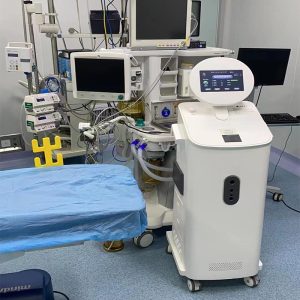Ozone, a disinfection gas, finds increasingly widespread applications across various domains.Understanding the corresponding emission concentration standards and regulations will help us make informed decisions.
Changes in China's National Occupational Health Standards:
The issuance of the mandatory national occupational health standard "Occupational Exposure Limits for Hazardous Factors in the Workplace Part 1: Chemical Hazardous Factors" (GBZ2.1-2019), replacing GBZ 2.1-2007, signifies a shift in standards for chemical hazardous factors, including ozone. The new standard, effective from April 1, 2020, imposes a maximum permissible concentration of 0.3mg/m³ for chemical hazardous factors throughout a workday.
Ozone Emission Requirements in Different Fields:
As ozone becomes more prevalent in daily life, various sectors have established specific standards:
Household Air Purifiers: According to GB 21551.3-2010, ozone concentration at the air outlet should be ≤0.10mg/m³.
Medical Ozone Sterilizers: As per YY 0215-2008, the residual ozone gas should not exceed 0.16mg/m³.
Utensil Sterilization Cabinets: In compliance with GB 17988-2008, ozone concentration at a distance of 20cm should not exceed 0.2mg/m³ in a 10-minute average every two minutes.
Ultraviolet Air Sterilizers: Following GB 28235-2011, the maximum allowable ozone concentration in the indoor air environment during operation is 0.1mg/m³.
Medical Institutions Disinfection Standards: According to WS/T 367-2012, the permitted ozone concentration in the indoor air, with people present, is 0.16mg/m³.
Introducing the Anesthesia Breathing Circuit Disinfection Machine:
In the realm of ozone disinfection, a standout product is the Anesthesia Breathing Circuit Disinfection Machine. Combining low ozone emission and compound alcohol disinfection factors, this product ensures optimal disinfection efficacy.

Anesthesia machine ozone disinfection equipment
Key Features and Advantages:
Low Ozone Emission: The machine emits ozone at only 0.003mg/m³, significantly below the maximum allowable concentration of 0.16mg/m³. This ensures personnel safety while providing effective disinfection.
Compound Disinfection Factors: Apart from ozone, the machine incorporates compound alcohol disinfection factors. This dual disinfection mechanism comprehensively eliminates various pathogenic microorganisms inside anesthesia or breathing circuits, minimizing the risk of cross-infections.
High Performance: The machine exhibits remarkable disinfection performance, completing the process efficiently. This enhances work efficiency, saves time, and ensures the effective disinfection of anesthesia and breathing circuit pathways.
User-Friendly: Designed for simplicity, the product is easy to operate. Users can follow straightforward instructions to complete the disinfection process. Additionally, the machine includes post-disinfection preventive measures to prevent secondary contamination.
Conclusion:
Ozone emission standards vary across different fields, with stricter requirements for situations involving people. Understanding these standards allows us to compare our own environmental quality requirements and regulations to make informed decisions about the use of relevant disinfection equipment.